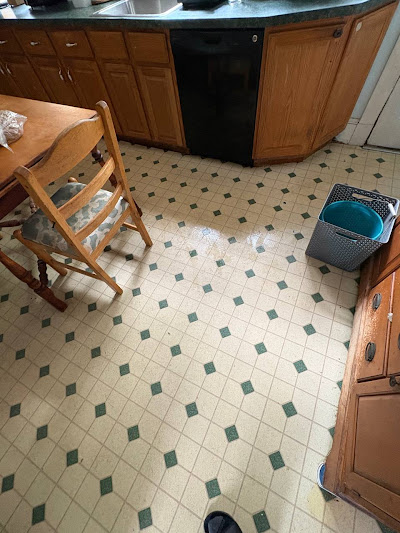Introduction
A garden hose is an essential tool for outdoor cleaning, gardening, and watering plants. However, hoses are not immune to wear and tear, and without proper care and maintenance, their lifespan can be significantly shortened.
By taking a few simple steps to protect and maintain your hose, you can extend its lifespan, save money, and ensure efficient and hassle-free use for years to come.
In this blog, we will explore effective strategies and maintenance tips to help you maximize the longevity of your hose. From storage and handling to regular inspections and cleaning, we’ll cover everything you need to know to keep your hose in excellent condition.
Proper Storage

Proper storage is crucial for preserving the lifespan of your hose. Leaving the hose exposed to extreme weather conditions, such as prolonged sunlight or freezing temperatures, can lead to premature deterioration.
After each use, make sure to drain any remaining water and coil the hose neatly. Avoid kinks and tangles by using hose reels or storage containers specifically designed for hoses.
Store the hose in a cool, dry place, protected from direct sunlight and extreme temperatures. This will prevent cracking, fading, and damage to the hose material, ensuring its longevity.
Handling with Care

Handle your hose with care to prevent unnecessary strain and damage. Avoid dragging the hose across rough surfaces or sharp edges that can cause abrasions or punctures.
Instead, lift and carry the hose when moving it from one location to another. Be mindful of any potential obstructions or objects that could snag or tangle the hose.
Additionally, avoid stepping on the hose or running over it with vehicles or heavy equipment, as this can lead to crushing or splitting. By handling the hose gently and with caution, you can minimize wear and tear and extend its lifespan.
Regular Inspections
Regular inspections are essential to identify and address any potential issues with your hose. Periodically check for signs of wear, such as cracks, leaks, or weak spots in the hose material. Inspect the hose connectors for any signs of corrosion or damage. If you notice any problems, repair or replace the affected parts promptly.
Inspect the nozzle or spray gun for clogs or damage, ensuring it provides a steady and efficient water flow. Regular inspections allow you to catch problems early on and prevent further damage, extending the overall lifespan of your hose.
Cleaning and Maintenance

Proper cleaning and maintenance are vital for keeping your hose in optimal condition. After each use, flush out any remaining water to remove debris or sediment that may have accumulated. Use a hose-end sprayer or nozzle with a strong stream of water to clean the inner surface of the hose.
If you notice any stubborn dirt or grime, you can use a mild soap solution and a soft brush to gently scrub the hose. Avoid using harsh chemicals or abrasive cleaners that can damage the hose material. Additionally, periodically inspect and clean the hose connectors, removing any dirt or mineral deposits that can affect the water flow.
Regular cleaning and maintenance help prevent clogs, improve water flow, and prolong the lifespan of your hose.
Protection from Extreme Temperatures
Extreme temperatures can have a detrimental effect on the lifespan of your hose. During freezing temperatures, water trapped inside the hose can expand and cause the hose to crack or burst.
To protect your hose during winter, make sure to drain all the water completely and store it in a frost-free location. Consider using insulated hose bib covers to protect the connection point from freezing. In hot climates, prolonged exposure to intense sunlight can lead to material degradation and fading.
Whenever possible, position the hose away from direct sunlight or use hose covers to provide UV protection. Shielding your hose from extreme temperatures helps prevent damage and extends its lifespan.
Avoiding Pressure Surges
Pressure surges can put excessive strain on your hose and lead to damage. When turning on the water supply, open the faucet gradually to allow a steady flow of water.
Sudden bursts of high pressure can cause the hose to stretch or burst. Additionally, avoid leaving the hose connected to the faucet under constant pressure for extended periods when not in use.
This can lead to unnecessary stress on the hose connectors and cause leaks or damage. By being mindful of pressure surges and taking precautions, you can prevent unnecessary wear and tear on your hose.
Choosing the Right Hose Material

The choice of hose material can greatly impact its lifespan and durability. When selecting a hose, consider the specific needs of your outdoor activities. Different materials have varying levels of flexibility, resistance to kinks, and tolerance to extreme temperatures.
Rubber hoses are known for their durability and resistance to abrasions, making them suitable for heavy-duty use. They also tend to have a longer lifespan compared to other materials. Vinyl hoses, on the other hand, are more lightweight and flexible, making them easier to maneuver and store.
However, they may be more prone to kinking and can be less resistant to extreme temperatures. Consider your usage requirements and the environment in which the hose will be used to make an informed decision on the most appropriate material.
Using Hose Accessories
Using the right accessories can help protect your hose and prolong its lifespan. One essential accessory is a nozzle or spray gun, which allows you to control the water flow and prevent unnecessary strain on the hose.
Opt for a high-quality nozzle with adjustable settings, such as a mist, shower, or jet spray, to cater to different cleaning or watering tasks. Another useful accessory is a hose reel or cart, which provides a convenient storage solution and prevents the hose from tangling or getting damaged.
Hose guides can also be beneficial in directing the hose along a specific path, preventing it from snagging or rubbing against sharp edges. By using these accessories, you can enhance the functionality of your hose and reduce the risk of damage during use and storage.
Proper Hose Connections

Ensuring secure and leak-free hose connections is crucial for maintaining the lifespan of your hose. Inspect the hose connectors regularly for any signs of wear or damage. Replace worn-out washers or gaskets to maintain a tight seal and prevent water leakage.
When connecting or disconnecting the hose from faucets or other accessories, do so carefully to avoid applying excessive force that can strain the connectors.
It’s also important to use the correct size and type of connectors to ensure compatibility and prevent leaks. Proper hose connections not only extend the lifespan of your hose but also contribute to water conservation by minimizing wastage.
Timely Repairs and Replacements
Even with proper care and maintenance, hoses can still experience wear and tear over time. It’s essential to address any issues promptly to prevent further damage and prolong the lifespan of your hose.
If you notice cracks, leaks, or significant damage that cannot be repaired, it may be necessary to replace the hose. Delaying necessary repairs or replacements can lead to more severe damage, increased water wastage, and potential accidents.
Regularly inspect your hose and address any repairs or replacements as soon as they arise to ensure the continued functionality and longevity of your hose.
Conclusion
Taking the necessary steps to extend the lifespan of your hose is well worth the effort. By following proper storage techniques, handling your hose with care, conducting regular inspections, practicing routine cleaning and maintenance, and protecting it from extreme temperatures and pressure surges, you can enjoy a durable and reliable hose for years to come.
Additionally, choosing the right hose material, using appropriate accessories, ensuring proper hose connections, and addressing timely repairs and replacements are vital for maximizing the lifespan of your hose. By implementing these strategies, you can save money, reduce waste, and have a hose that consistently performs at its best.
So, invest the time and effort in maintaining your hose, and you’ll reap the rewards of a long-lasting and efficient outdoor cleaning and watering tool.







